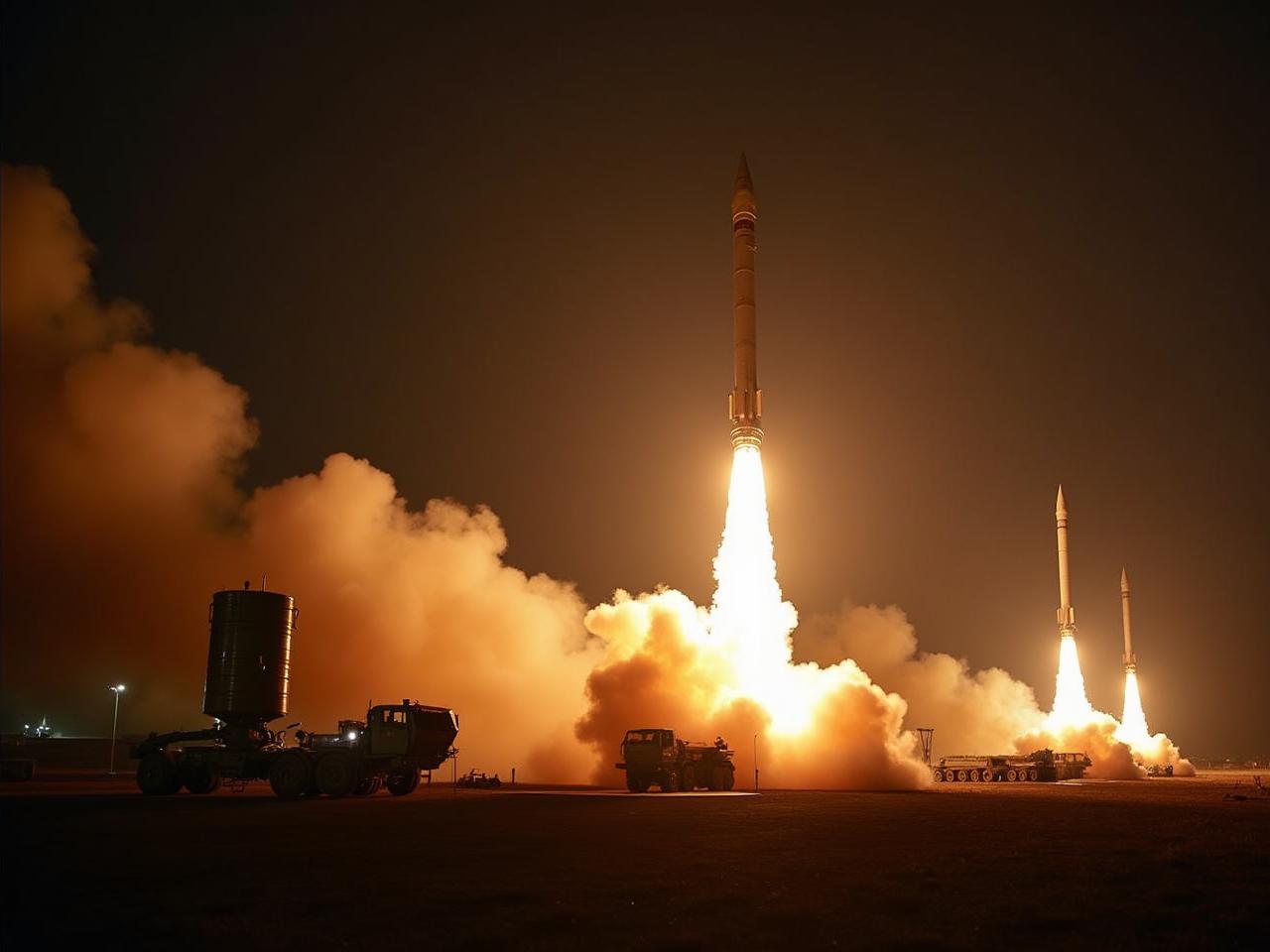Intercontinental ballistic missiles (ICBMs) have drastically transformed the global military landscape, particularly with their capacity to deliver nuclear warheads over distances surpassing 5,500 kilometers in mere minutes. These advanced weapons epitomize cutting-edge military technology and are instrumental in strategic deterrence.
The Current Landscape of ICBM Technology
Among the most potent of these systems is Russia’s RS-28 Sarmat, frequently dubbed the strongest missile globally. This weapon boasts an astounding range of 18,000 kilometers and has the capacity to carry up to 15 nuclear warheads. Similarly, China’s DF-41 poses a significant threat with its reach of 14,000 kilometers, enabling strikes anywhere in Europe or North America within just 20 minutes. The United States relies on the aging yet reliable LGM-30 Minuteman III, operational since the 1970s, which carries a 13,000-kilometer range. The existence and capabilities of these missiles continue to shape international relations and defense policies.
The Race for Supremacy
The competition for dominance in nuclear ballistic missile technology is fierce. While Russia introduces newer models like the RS-28 Sarmat, the United States maintains substantial firepower, with 405 Minuteman III missiles positioned across three bases. Furthermore, the U.S. Navy’s 14 Ohio-class submarines are equipped with 288 Trident II missiles, each capable of delivering multiple warheads over ranges of up to 12,000 kilometers. Although less prominent in discussions, India’s Agni-V, with a range of 5,000-8,000 kilometers, signifies its emerging strategic capability since becoming operational in 2021.
Detailed Insights into Leading ICBMs
RS-28 Sarmat (Russia)
The RS-28 Sarmat is a next-generation nuclear deterrent developed to succeed the outdated Soviet-era R-36M2 Voyevoda system. Officially operational as of September 2023, the Sarmat has faced a tumultuous development history, with various technical challenges and testing hurdles.
- Specifications: It measures 35.3 meters in length, has a diameter of 3.0 meters, and weighs 208,100 kg. Its three-stage, liquid-fueled design makes it one of the largest ICBMs currently in service.
- Range and Payload: With its massive range, it can reach targets worldwide and has a payload capacity exceeding 10 tons. It can carry multiple warheads, including heavy nuclear warheads, smaller warheads, and hypersonic glide vehicles, making it an immensely versatile weapon.
- Development and Deployment: Despite claims of operational status, the RS-28 has experienced several failures in its testing regime, raising questions about its reliability. Plans are in place for its deployment at strategic sites across Russia.
LGM-30G Minuteman III (USA)
The LGM-30G Minuteman III is the United States’ sole land-based ICBM and a cornerstone of its nuclear deterrent strategy. Though it dates back to the 1970s, modernization efforts have kept it relevant.
- Specifications: The missile is 18.2 meters long and weighs 36,030 kg. Its three-stage solid-propellant design allows for quick launch readiness.
- Range and Payload: The Minuteman III can reach targets over 13,000 kilometers, although currently limited to a single warhead due to treaty obligations.
- Deployment Status: There are 400 operational Minuteman III missiles situated in hardened silos across three Air Force bases, equipped with advanced communication systems to ensure launch capabilities under various circumstances.
DF-41 (China)
China’s DF-41 has garnered attention as the latest addition to its strategic arsenal. First revealed publicly in 2019, this missile enhances China’s ICBM capabilities significantly.
- Specifications: The DF-41 measures between 20 to 22 meters in length and can weigh up to 80,000 kg. Its three-stage solid propellant design ensures reliability and rapid deployment.
- Range and Payload: With a striking range of 12,000-15,000 kilometers, it’s capable of reaching any location in the continental U.S. It can carry up to 10 MIRVs, enabling it to strike multiple targets simultaneously.
- Deployment Status: Currently, China operates at least 20 DF-41 missiles, with ongoing efforts to introduce more to its arsenal, reflecting an extensive expansion of its land-based nuclear force.
The Role of Submarine-Launched Missiles
The UGM-133 Trident II missile, deployed on U.S. and UK submarines, forms a critical element of the sea-based nuclear deterrent.
- Specifications: The missile is approximately 13.42 meters long and weighs around 59,090 kg. Its three-stage design ensures accuracy and extended reach.
- Range and Payload: With a range of 12,000 kilometers, it can strike from various locations, maintaining a vital second-strike capability. It supports multiple configurations of nuclear warheads.
- Deployment Status: The Trident II is operational on 14 U.S. Ohio-class submarines and four British Vanguard-class submarines, ensuring a robust sea-based deterrent.
Other Noteworthy Systems
RS-24 Yars (Russia)
The RS-24 Yars missile, operational since 2010, enhances Russia’s nuclear capabilities through both road-mobile and silo-based deployment options.
Agni-V (India)
India’s Agni-V, with a striking range of approximately 5,000-8,000 kilometers and MIRV capabilities, marks a significant improvement in its strategic assets.
Hwasong-17 (North Korea)
North Korea’s Hwasong-17 is heralded as the country’s most formidable missile, capable of reaching 15,000 kilometers, presenting fresh challenges to international security dynamics.
Conclusion
The evolution of ICBM technology continues to significantly impact global military strategies. While Russia’s RS-28 Sarmat exemplifies technological advancements with its impressive features, the reliability of the U.S. Minuteman III ensures strategic stability. China’s DF-41 showcases strategic reach and diversity in deployment, while India’s Agni-V represents a rising power in the nuclear arena. North Korea’s Hwasong-17 adds further complexity to global security calculations.
Ultimately, the existence of these advanced systems plays a crucial role in deterrence, shaping the geopolitical landscape. Understanding their capabilities is essential for grasping current international relations and the ongoing strategic balance among nuclear powers.










